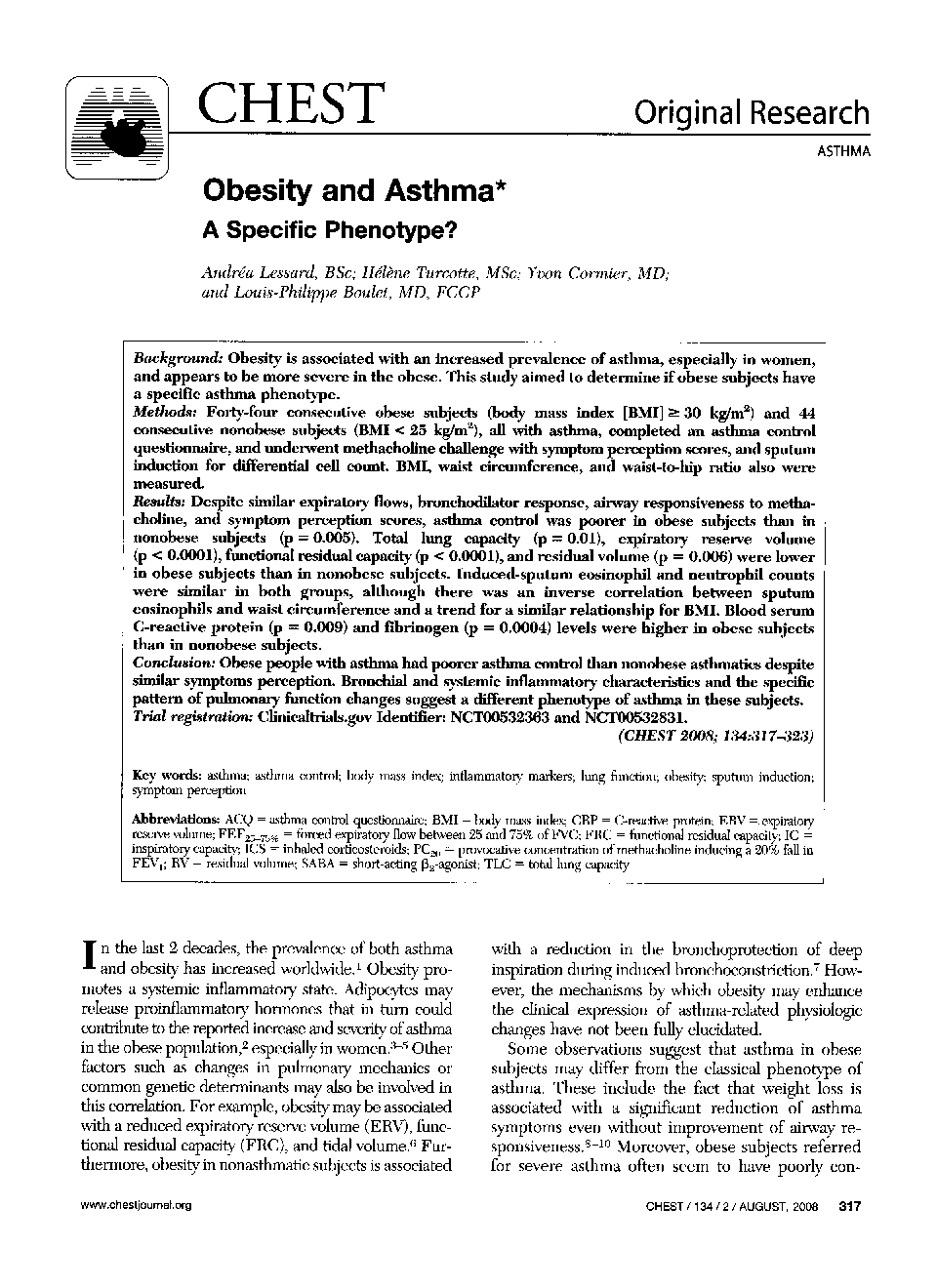| Article ID | Journal | Published Year | Pages | File Type |
|---|---|---|---|---|
| 2905833 | Chest | 2008 | 7 Pages |
BackgroundObesity is associated with an increased prevalence of asthma, especially in women, and appears to be more severe in the obese. This study aimed to determine if obese subjects have a specific asthma phenotype.MethodsForty-four consecutive obese subjects (body mass index [BMI] ≥ 30 kg/m2) and 44 consecutive nonobese subjects (BMI < 25 kg/m2), all with asthma, completed an asthma control questionnaire, and underwent methacholine challenge with symptom perception scores, and sputum induction for differential cell count. BMI, waist circumference, and waist-to-hip ratio also were measured.ResultsDespite similar expiratory flows, bronchodilator response, airway responsiveness to methacholine, and symptom perception scores, asthma control was poorer in obese subjects than in nonobese subjects (p = 0.005). Total lung capacity (p = 0.01), expiratory reserve volume (p < 0.0001), functional residual capacity (p < 0.0001), and residual volume (p = 0.006) were lower in obese subjects than in nonobese subjects. Induced-sputum eosinophil and neutrophil counts were similar in both groups, although there was an inverse correlation between sputum eosinophils and waist circumference and a trend for a similar relationship for BMI. Blood serum C-reactive protein (p = 0.009) and fibrinogen (p = 0.0004) levels were higher in obese subjects than in nonobese subjects.ConclusionObese people with asthma had poorer asthma control than nonobese asthmatics despite similar symptoms perception. Bronchial and systemic inflammatory characteristics and the specific pattern of pulmonary function changes suggest a different phenotype of asthma in these subjects.Trial registrationClinicaltrials.gov Identifier: NCT00532363 and NCT00532831.
